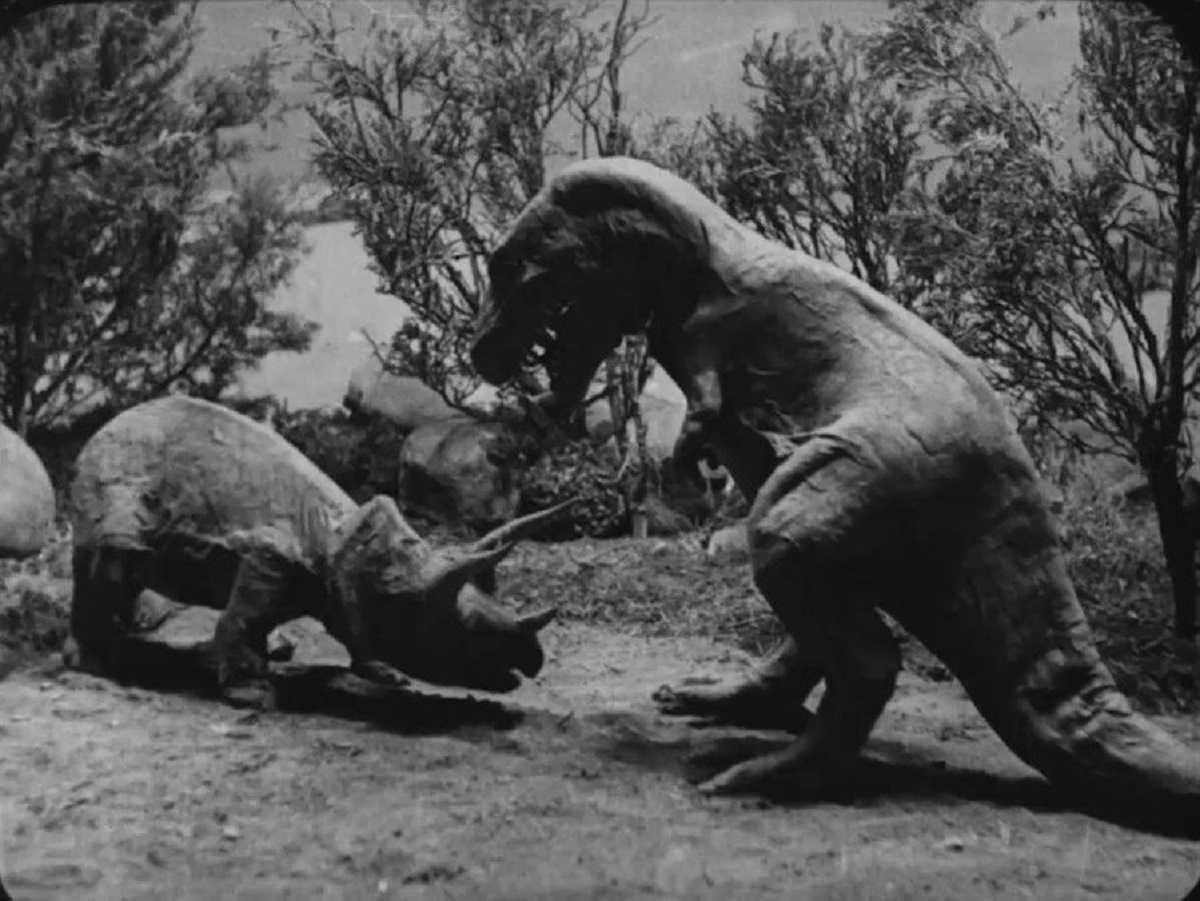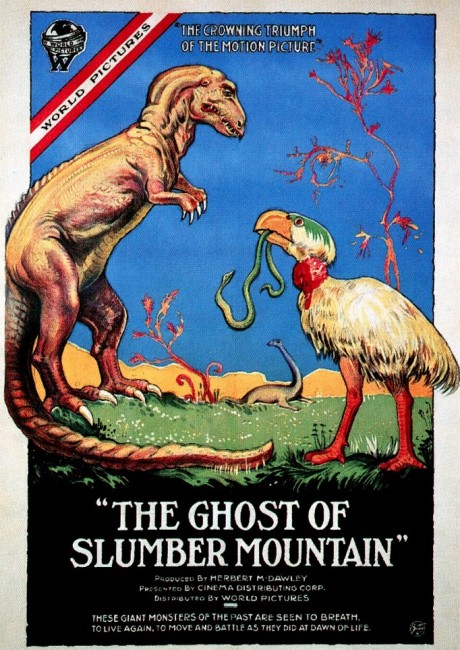USA. 1918.
[All Uncredited]
Crew
Director/Photography (b&w)/Stop Motion Animation – Willis O’Brien, Screenplay – Herbert M. Dawley & Willis O’Brien, Producer – Herbert M. Dawley. Production Company – Herbert M. Dawley Productions.
Cast
Herbert M. Dawley (Jack Holmes), Alan V. Day & Chauncey A. Day (Nephews), Willis H. O’Brien (Ghost of Mad Dick)
Plot
Author and artist Jack Holmes is pressed by his two nephews to tell them a story from one his journals. He tells them of how he and his friend Joe went trekking up Slumber Mountain. After making camp for the night, Jack had a dream in which he was drawn to the cabin of the late hermit Mad Dick. From there he took a special optical device that allowed him to look from the mountainside and see the dinosaurs of the prehistoric past.
Willis O’Brien (1886-1962) was a pioneer in the field of Stop-Motion Animation – an almost bygone art these days whereby models are adjusted by minute increments and filmed one frame at a time to give the impression of fluid movement. O’Brien had worked on the railroads and as a cowboy before becoming a sculptor. Some of his models were animated by another filmmaker and on the basis of this O’Brien was given $5000 by producer Herman Wobbler to make The Dinosaur and the Missing Link: A Prehistoric Tragedy (1915).
Subsequent to that, O’Brien was hired by Thomas Edison to make several other prehistoric shorts in the same vein before producer Herbert M. Dawley bankrolled him to make The Ghost of Slumber Mountain. The two would later collaborate on another prehistoric short with Along a Moonbeam Trail (1920), although to all accounts the partnership was not a happy one and O’Brien and Dawley bitterly fought.
From there, O’Brien went on to much more ambitious work, delivering stop-motion animated effects on the feature-length The Lost World (1925) and his magnum opus King Kong (1933). He did sporadic other stop-motion animated work over the years with The Son of Kong (1933), Mighty Joe Young (1949), The Black Scorpion (1957) and The Giant Behemoth (1958), although suffered from poor health in later years. Other films such as The Beast of Hollow Mountain (1956) and The Valley of Gwangi (1969) were based on his story ideas.
The Ghost of Slumber Mountain was O’Brien’s seventh film and a foretaste of what would find its grand flowering on The Lost World and King Kong. O’Brien had conducted some rather primitive dinosaurs in The Dinosaur and the Missing Link but the ones we see here are altogether more technically sophisticated and show him moving in the directions of where things would eventually blossom.

Among the various Dinosaurs that O’Brien gives us are brontosauruses, stegosauruses and a pterodactyl. The effects for these are as far as I can tell not too bad – the dinosaurs move with reasonable smoothness. The main problem is that the print that one was watching via YouTube is so faded and cracked that it is difficult to tell what is happening on screen – especially in that O’Brien shoots most of the dinosaur scenes in wide angles where the fadedness of the film print makes it frequently hard to distinguish the dinosaurs from the surrounding foliage.
The film has a 16-minute runtime, which is perfect for its telling. The first half is the two men and their journey up the mountainside and the discovery of the prospector’s hut; in the second half, the narrator (played by producer Herbert M. Dawley) falls asleep, returns to the hut and picks the magic optical device that allows him to see the past. We get various scenes of dinosaurs, although they do not do much – the film simply exists as a travelogue that does little more than show us the dinosaurs. Apart from the very brief scene in The Dinosaur and the Missing Link, this would have been the first times audiences had seen dinosaurs on screen and the film would no doubt have been a novelty in the day.
The narrator then wakes from a dream where he thinks one dinosaur is nibbling on him. The All a Dream Ending was a corny device that was common in a number of films in the silent era where the dreamer would usually wake up and realise the error of their ways, although O’Brien makes it work with appealing amusement. All of this also comes within a framework where the narrator is reading a story from his journal to his nephews.
Trailer here

